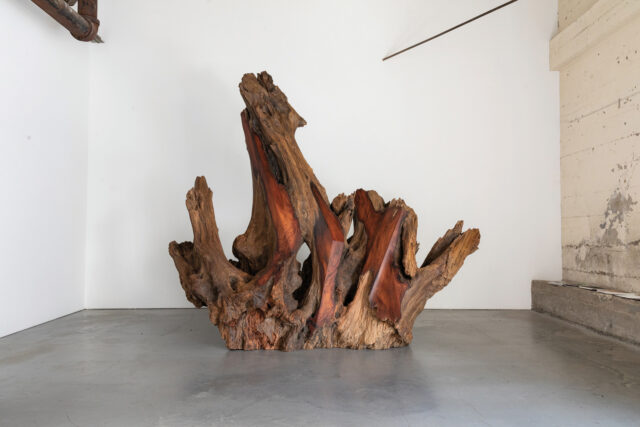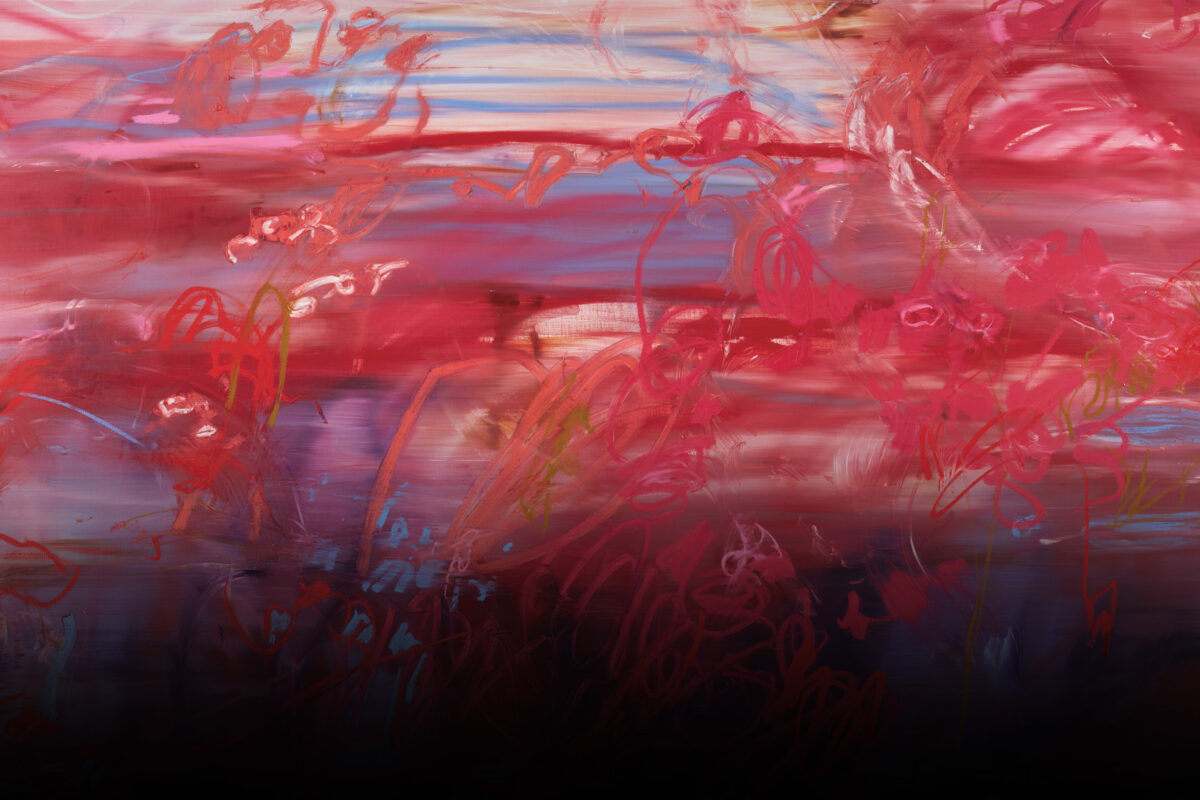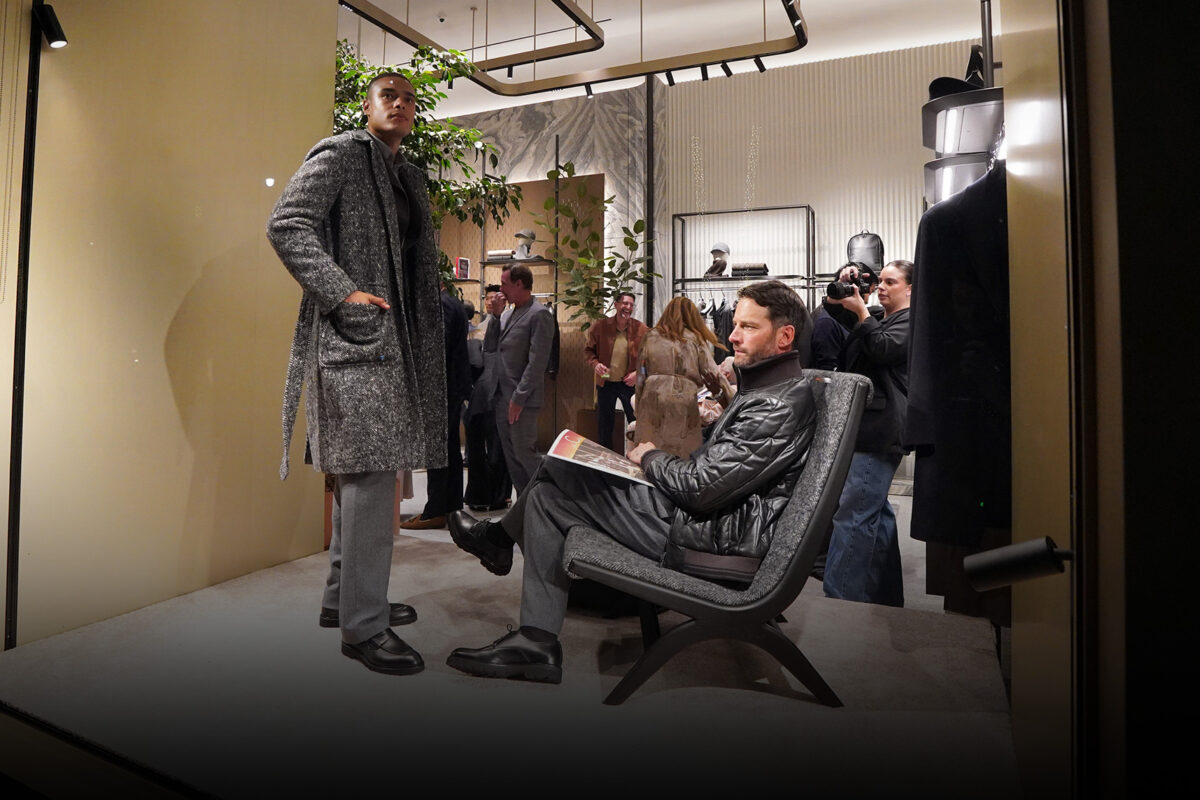Ido Yoshimoto creates furniture and art from the hulking redwoods that surround his cabin in the wilds of Inverness
Words by GEMMA PRICE
“It was a dream to be paid to climb trees,” he recalls, noting how his intimate relationship with living trees led to working with wood. “I feel that tree work is inseparable from tree health and understanding the growth and qualities of different species.”
At first Yoshimoto experimented with carving replacement handles from small pieces picked up on tree jobs. Then he began taking on larger projects, such as a rustic patchwork wood wall and karaoke room at Ramen Shop in Oakland, founded by Chez Panisse alumni.
The cabin is located across a dirt track from the former studio of iconic sculptor J.B. Blunk, who specialized in wood and clay. Yoshimoto’s father, Rick, assisted the late craftsman for decades before Blunk died in 2002. Blunk was Ido’s godfather and had a daughter the same age; the families vacationed together in Mexico and Hawaii. Years later, Yoshimoto also worked within Blunk’s studio.
Like Blunk, Yoshimoto built his home by hand, weaving his art practice and way of life. In 2017, when he spotted a dilapidated cabin 100 feet from Blunk’s studio, he signed a lease. After ejecting a family of raccoons from the 500-square-foot structure and adjoining studio, he fixed the leaks and broken windows, replaced the doors and counters, and shopped out walls and ceilings, chainsawing through timbers and peeling away decades of ad hoc additions.
“It was sort of a funny moment of going straight from cutting a log to cutting my ceiling to reveal more space and light,” he recalls.
“I like how everything is connected—there’s a real visual and tactile connection throughout the art and practice of living”
IDO YOSHIMOTO
Photography by IDO YOSHIMOTO.
Using local resources, he erected an outbuilding to use as a bedroom, along with an outdoor shower, a kitchen, and a dining area. When his longtime friends and neighbors replaced their leaky redwood water tank with polycarbonate, Yoshimoto rolled the cylindrical structure into his yard and converted it into a sauna. Cutoffs from the trunks and burls that sit as furniture pieces and artworks in his clients’ homes have found new life as shelving supports. Any scraps he can’t repurpose are burned on a woodstove (found on Craigslist) to keep the family warm through the winter.
“I like how everything’s connected—there’s a real visual and tactile connection throughout the art practice and living,” he says, adding that this time-honored approach to making a home has largely disappeared as land and labor grow more expensive and planning regulations become more restrictive.
“It takes away a lot of the magic that happens when you can watch the sun track at different heights during the seasons and know where you want to put a window or sitting space. It’s hard to find opportunities to let things naturally unfold and to work intuitively.”
Currently Yoshimoto’s practice is evenly divided between private commissions and sculptural art. After commissioning a 3,500-lb kitchen island, one client had to install load-bearing struts to the structure of his home to support it. Minnesota Street Project in San Francisco displays a huge piece resembling an open hand with spread root fingers, a work that juxtaposes nature and human interference, organic and geometric form. Yoshimoto sourced the tree root from Arborica where it was brought in from the Russian River Valley, and the gallery gave him only one parameter: the piece had to fit through the door. “It’s such a beautiful, wild piece of wood that I couldn’t bear to manipulate it too much,” he says. “It was already a sculpture as it is, but adding the hand of the maker is important.”
Photography by IDO YOSHIMOTO.
Yoshimoto’s needs are well known in Marin County. He works with the local authorities and parks to salvage the woods that are available after fire, forestry maintenance, or a force majeure. People he’s known since childhood who work at local mills will notify him if an interesting piece comes in. He occasionally gets a call from a member of the community after a tree falls on a neighbor’s property. “That’s the magic of wood,” he says. “It always shows its qualities and its nature. Eventually, no matter what you do to it, it has the power to come through at the end and have the last say.”
Although he feels intimately connected to his current home, Yoshimoto is looking to build a larger home in Inverness on a different piece of land—a tough proposition in a beautiful part of California where many landlords prioritize lucrative short-term rentals. When he does, the cabin will revert to the Nature Conservancy on which it is situated. (Much of Marin’s land is protected from development; Yoshimoto’s current studio is on Black Mountain Ranch, which spans 1,000 acres of Marin Agricultural Land Trust.)
Yoshimoto says that even though the area is expensive, the way he wants to live is not: A perfect day is one spent with family and his community of friends with children, hitting the beach with some great wine and oysters.
“We share the same priority of enjoying life by eating great meals, drinking wine, and getting in a beautiful thought,” he says. “If we can nail down a place to live, I’d love to live out here forever.”
Feature image: Ido Yoshimoto’s intimacy with the forest organically led to woodwork. Provenance is important: Many pieces of wood are salvaged through Marin County’s tight-knit community and wider arborist networks. Photography by BRYSON MALONE.
This story originally appeared in the Men’s Spring 2023 issue of C Magazine.
Discover more DESIGN news.
See the story in our digital edition






